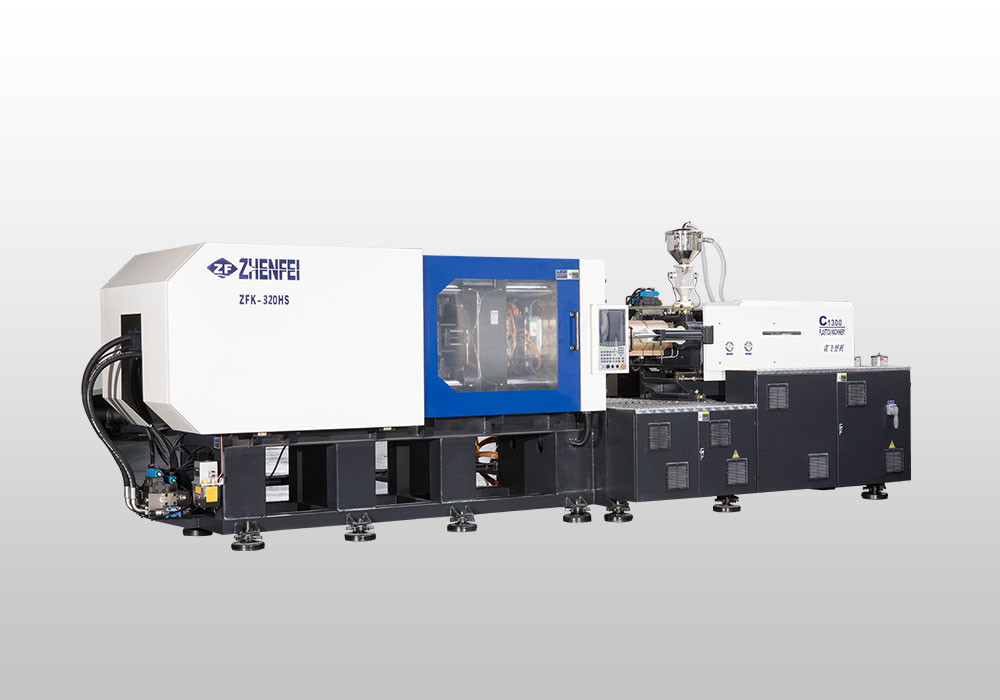Date:Apr 01, 2021
A. Multi-stage injection plastic flow principle:
1. The first shot glue is fed at a low speed, move the nozzle to the cold head and increase the second shot speed to fill the cavity to shorten the time for the plastic at the gate to flow to the end, so that the viscosity of the plastic in the filling is maintained to a minimum solidification. However, it is difficult to control the correct holding pressure switching point for high-speed injection, so multi-stage deceleration must be used to effectively control the holding pressure switching point.
2. Operation principle of segmented injection:
Use electro-optical control to direct the flow proportional valve in the hydraulic system to instantly obtain the injection speed at one point to achieve the segmented shooting speed.
B. The relationship between the shooting speed and pressure of segmented injection:
1. In the segmented injection molding process, no matter how many stages of the filling process are changed, the injection pressure has only one pressure, that is, one pressure, while the pressure holding stage can only maintain one speed regardless of the number of stages of holding pressure.
2. Examples of segmented injection:
⑴The same finished product can be molded with a smaller clamping force, which can extend the life of the machine and mold;
⑵Segmented deceleration and mastering the correct switching point of holding pressure can effectively ensure the stability of quality;
⑶ When the molding plastic flows too well, low-speed injection is used to prevent burrs, but the raw material should not be cooled and solidified. After the molten resin passes through the thick part, the injection speed is increased and the mold cavity is quickly filled, and the flow mark (the molten fat gradually decreases The stripe pattern with the gate as the center) is caused by the boundary formed between the resin that initially flows into the cavity and the resin that flows into the cavity after cooling too fast.

⑷In the case of thick molding at the rubber inlet (ie gate), too fast shooting speed will cause turbulence, and the cold material is easy to remain in the channel and form flow marks. Therefore, the cold material head should be pushed open at a slow speed and low pressure to make the back The plastic enters smoothly.
⑸In the injection molding process, the nozzle part is in contact with the mold. Because the mold cooling water cools the mold temperature lower than the nozzle, part of the heat is taken away by the mold, and the nozzle is easy to produce cold stubs. These cold stubs are injected into the mold and will be at the gate. Blocking causes flow lines or silver bar-like marks, which can be improved by probing segmented injection.
⑹Precision and small parts, fine gate size, and the balance production of most mold cavity gates is extremely difficult and difficult. It can be overcome by opening the gates to the same size and using multi-stage injection technology.
⑺ The change of the switching position between the first stage of low-speed injection and the second stage of high-speed injection can correct the local displacement of the weld line, such as the displacement of the obvious part to a less obvious position (such as the labeling place).
⑻The phenomenon of depression and poor fusion are opposite to each other during molding, and this method can be used to improve at the same time; the product's depression part has a rapid decrease in shooting rate, and after filling the surface layer to the cold solidification, the shooting rate is increased rapidly to fill the mold cavity, and the weld line should be fastened. Injection of glue to prevent poor fusion (generally, the surface depression of the molded product occurs in the thick part, which is caused by the volume shrinkage of the molten resin when it is cooled and solidified).
⑼In the process of holding pressure, the stepwise reduction can reduce the residual stress of the molded product.
⑽The molding conditions of thin molded products and long flow distance require high pressure to be successfully completed, but high-speed and high-pressure injection can easily cause residual stress at the gate, which affects quality. Therefore, high-speed injection, medium-speed filling, and low-speed holding pressure are used to eliminate residual stress. So as to prevent the deformation of the finished product.
⑾Improve the mold cooling: if the movable mold temperature is low, the fixed mold temperature is high, the molded product will not be inwardly warped, and if the movable mold temperature is high, the molded product may be outwardly warped.
⑿ Scorching (the phenomenon caused by the compression and combustion of gas in the mold cavity) is most likely to occur at the parting line or welding place. The surface of the resin shows black carbonization traces, and the air gas must be smoothly discharged from the mold cavity, and the shooting speed must be reduced. .